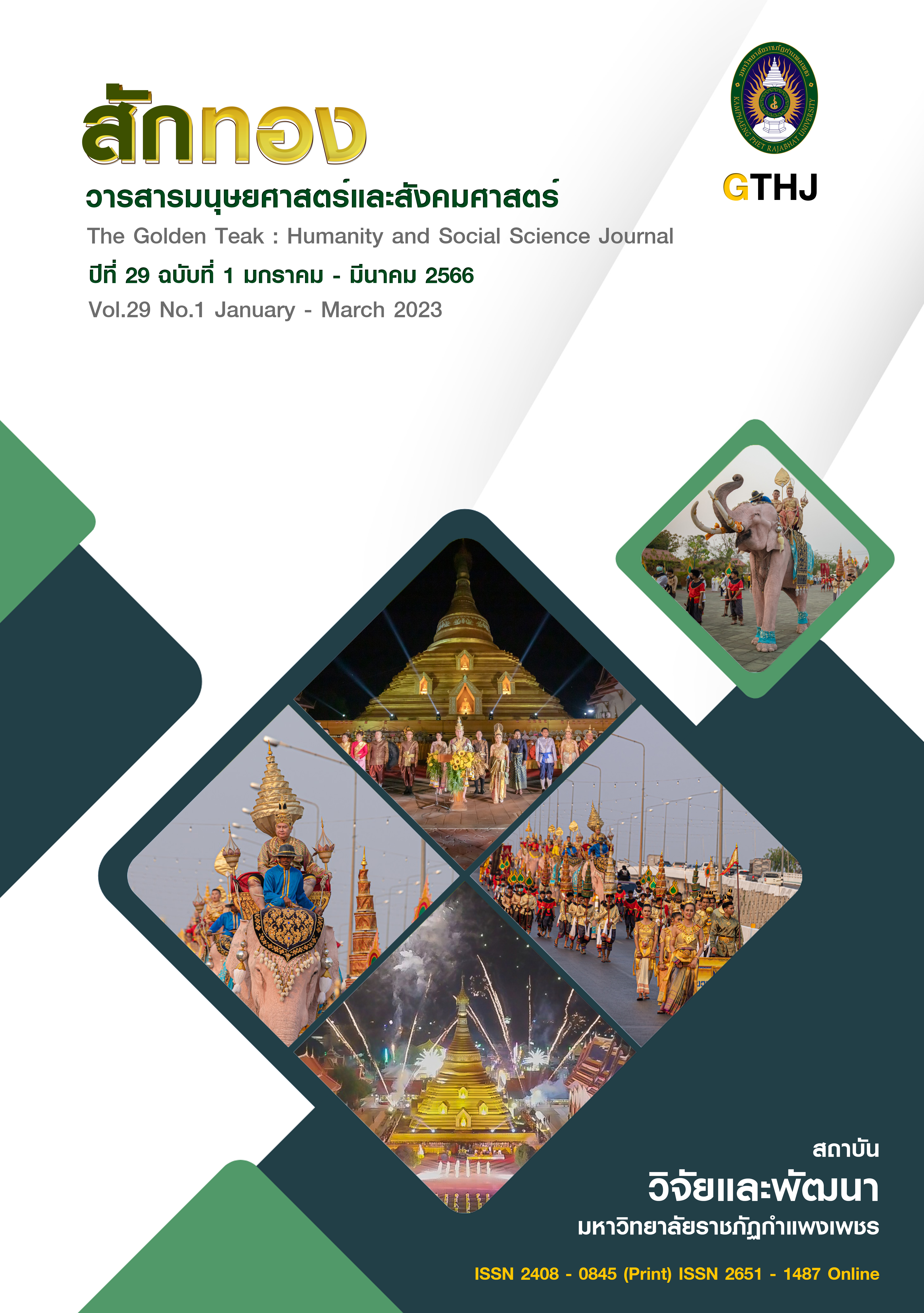The Participatory Management in Bamboo Resources at Ban Phatub Community Amphur MuangNan, Nan Province
Main Article Content
Abstract
The Research on participation in bamboo forest resources management of Ban Phatub, Mueang Nan District, Nan province. Purpose to study of context at Ban Phatub, Mueang Nan District, Nan Province in each dimensioned for analysis the factors influence on management in bamboo resources. The finding outs were determined with 143 questionnaires with the households at Ban Phatub and the interview was methodology for 13 key informants who are the stakeholders in bamboo resources involve with 80 villagers who surrounding to national park of Ban Phatub. Including a forum for in-depth interviews with community leaders, group leader involved in bamboo resources local officials, government agencies and key informants a total of 13 person, found that the geographical, physical in economics social and environment of Ban Phatub, that sectors can be supplement to participate in bamboo resources in addition, the relatively factors in existing of Ban Phatub village such as the bureau of government, local officer where surrounding Phatub community, there are able to support the performance of bamboo resources management model.
Article Details

This work is licensed under a Creative Commons Attribution-NonCommercial-NoDerivatives 4.0 International License.
บทความที่ได้รับการตีพิมพ์เป็นลิขสิทธิ์ของวารสาร สักทอง : วารสารมนุษยศาสตร์และสังคมศาสตร์ สถาบันวิจัยและพัฒนา มหาวิทยาลับราชภัฏกำแพงเพชร
ข้อคิดเห็นใดๆ ที่ปรากฎในวารสารเป็นวรรณกรรมของผู้เขียนโดยเฉพาะ ซึ่งมหาวิทยาลัยราชภัฏกำแพงเพชรและบรรณาธิการไม่จำเป็นต้องเห็นด้วย
References
Banjongsiri, S., et al. (2018). The Pattern in Water Resources Management by Public Sector Case Study of Nan River Basin. Sukhothai Thammathirat Open University Nontaburi Province. [In Thai]
Chrermrap, P. (2014). The Diversity of Biology in Resources Management Pattern of Thailand. Nonthaburi : Sueb Nakasatian Foundation. [In Thai]
Cohen., J.M. & Uphoff, N.T. (1980). Participations place in rural development: Seeking clarity through specificity. New York : World Developments.
Hintoa, B. (2012). A Participatory Community Patterns about Sustainable Community Forest Management: A Case Study of Tambon Thai-i-boon, Lomsak District, Phetchabun Province. Faculty Management of Science Pibulsongkram Ratchabat University. [In Thai]
Koontz, H.D. (1972). Principle of Management. New York : Mc Graw-Hill.
Kumsatra, S. (2016). The Participation of Citizens in Community Forest Conservation : A Case Study of Thambon Chongsado AmphureMuang Kanchanaburi, Kanchanaburi Province. Journal of Humanities and Social Sciences Rajapruk University, 1(3), 59-68. [In Thai]
Office of Permanent Secretary. (2019). Thambon Pha-Sing Data. The Local Organization at Thambon Pha-Sing.
Puangnamgit, J., et al. (2013). The Development in Participatory Forest Community Management : A Case Study of:Tambon Ta Praduk Amphur Mae Ta, Lumphun Province. Research KMUTT R&D Journal, 36(2), 215-234. [In Thai]
Srithanathorn, P. (2013). Innovation Community Forest Management in Local Development:
Community Practice, People Participation, and Success of Forest Conservation of Huay-Mae-Hin Community Forest, Ngao District Lampang Province. Srinakharinwirot Research and Development (Journal of Humanities and Social Sciences), 5(9), 99-115. [In Thai]
Tamphatub National Park Office. (2019). The Data of Tamphatub National Park at Nan Province. Department of National Parks, Wildlife and Plant Conservation. [In Thai]
The Eighth National Economic and Social Development Plan. (1977). Potential Implement of
the Region and Rural Community. Legislative Institutional Repository of Thailand. Parliament of Thailand. [In Thai]
Wongbooncha, H. (2020). Second-Order Confirmatory Factor Analysis Affecting Determining
Satisfactory for Learning Management in Course of Faculty Management Science. journal of Management Science Udonthani Rajabhat University, 2(6), 105-117.[In Thai]
Wongnaya. N., Maneerat, T. & Phousamanee, S. (2020). Conservation and Restoration of Food and Herb Diversity of Karen Community in Klonglan National Park, Kampheng Phet. The Golden Teak : Humanity and Social Science Journal, 26(4), 56-71. [In Thai]


